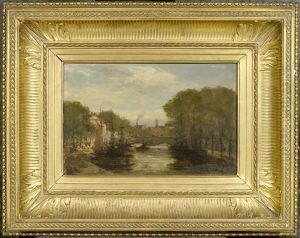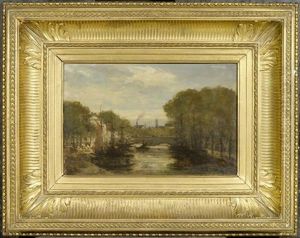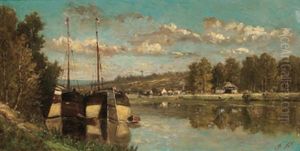Florimond Palvadeau Paintings
Florimond Palvadeau was a French artist whose life spanned the turbulent second half of the 19th century and the early years of the 20th century, a period marked by significant social, political, and artistic changes in Europe. Born in 1845, Palvadeau lived through the era of the Franco-Prussian War, the Paris Commune, and the formation of the French Third Republic. These events, coupled with the rapid industrialization and urbanization of France, provided a rich backdrop against which his artistic career unfolded. Despite the scarcity of extensive documentation on Palvadeau compared to his contemporaries, his work contributes valuable insights into the artistic movements and societal shifts of his time.
Palvadeau's artistic journey was characterized by his focus on genre painting, landscapes, and occasionally, portraiture, reflecting the era's inclination towards realism and later, the influences of impressionism. His style evolved over the years, showcasing his ability to adapt and respond to the changing tastes and artistic innovations of the late 19th and early 20th centuries. While not as widely recognized as some of his peers, Palvadeau's contributions to French art were nonetheless significant, offering a nuanced perspective on everyday life and the natural world through his detailed and often vibrant works.
Throughout his career, Palvadeau exhibited his work in various salons and galleries, gaining respect among his peers and critics alike. His paintings captured the essence of his time, with a particular focus on the landscapes of rural France and the lives of its inhabitants. This focus made his work resonate with audiences who were witnessing the transformation of their country and sought a connection to their changing world through art.
Florimond Palvadeau passed away in 1916, leaving behind a body of work that, while not as prolific or renowned as some of his contemporaries, provides a window into the world of late 19th and early 20th-century French art. His paintings, characterized by their attention to detail, use of color, and ability to evoke emotion, continue to be appreciated by art historians and collectors for their contribution to the understanding of this pivotal period in art history.


